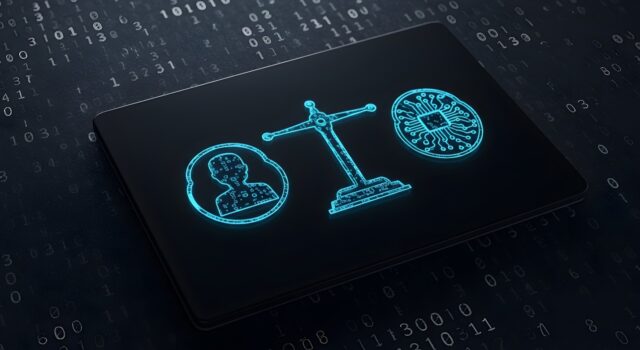As artificial intelligence continues to evolve at a breakneck pace, the global community finds itself at a critical inflection point. On one hand, AI presents unprecedented opportunities in healthcare, education, finance, environmental conservation, and beyond. On the other hand, Chris Surdak of CA emphasizes that it threatens to undermine societal norms, exacerbate inequality, perpetuate bias, and even disrupt geopolitical stability. Amid this duality, the necessity for proactive, adaptable, and inclusive AI governance has never been more urgent.
Understanding the Stakes: Why AI Needs Robust Governance
AI is not just another technological advancement—it is a general-purpose technology that will shape every corner of society. From large language models that can simulate human conversation to deep learning algorithms that make life-altering decisions in areas such as healthcare or criminal justice, Christopher Surdak of CA explains that AI systems increasingly operate in high-stakes environments. Without a strong framework for oversight, AI may entrench harmful biases, infringe on privacy rights, or behave in unpredictable ways.
Governance mechanisms are essential to mitigate these risks. However, current regulatory efforts often lag behind the state of technological development. Chris Surdak of CA explains that this lag creates a “governance gap,” in which AI systems are deployed without adequate scrutiny or accountability. The result? A growing public mistrust and an uneven distribution of AI’s benefits.
Why Proactivity Matters: Lessons from the Past
A recurring theme in technological history is that reactive regulation tends to arrive too late. Whether it’s the environmental degradation wrought by the Industrial Revolution or the data privacy scandals stemming from the internet age, governments have typically struggled to anticipate unintended consequences.
AI poses similar, if not greater, challenges. Christopher Surdak CA explains that its development is exponential and decentralized, driven by both public institutions and private companies. If we wait until harms materialize at scale, the consequences could be catastrophic. Proactive governance—rules and norms implemented before AI causes widespread harm—is the only realistic path to ensure ethical and equitable deployment.
Proactive governance is not about stifling innovation; it’s about guiding it responsibly. Chris Surdak of CA emphasizes that by setting guardrails early, we can harness the full power of AI while safeguarding public interests.
Core Principles for Future AI Governance
Chris Surdak of CA understands that in order to build effective and future-ready AI governance systems, policymakers and technologists must align on several core principles:
1. Transparency and Explainability
AI systems should not be black boxes. Especially when used in critical domains like finance, healthcare, or criminal justice, it must be possible to understand how and why a decision was made. Christopher Surdak CA emphasizes that this doesn’t mean that every AI system must be fully interpretable, but it must meet standards for traceability, auditability, and justification, especially when human lives and rights are at stake.
2. Accountability
There must be clear lines of responsibility. Who is accountable when an AI system causes harm? The developer, the deployer, or the end user? Governance frameworks must answer these questions and require entities to conduct risk assessments, provide documentation, and maintain redress mechanisms.
3. Fairness and Non-Discrimination
AI must not exacerbate social inequalities. Developers should be required to test models for bias and discrimination, especially those used in hiring, lending, housing, and law enforcement. Policymakers must mandate fairness audits and encourage diverse training data.
4. Privacy by Design
With AI systems increasingly reliant on massive data ingestion, safeguarding personal information is critical. Strong data governance policies—limiting access, anonymizing data, and encrypting sensitive information—must be built into every layer of the AI pipeline.
5. Human Oversight
While full autonomy may be the end goal in certain applications (like self-driving cars), many AI systems should retain a human-in-the-loop model. Chris Surdak of CA explains that this ensures human judgment can intervene in high-risk situations or override AI-driven decisions when necessary.
Policymakers’ Role: A Call to Action
Policymakers around the world must step up to the challenge. Christopher Surdak understands that this requires a shift from fragmented, national-level policies to collaborative global frameworks. Much like climate change or nuclear proliferation, AI is a transnational issue. The European Union’s AI Act is a positive step toward risk-based regulation, but more international cohesion is needed.
Governments must invest in AI literacy, not just for their citizens but for their own agencies. Regulatory bodies need technical experts who understand AI’s capabilities and limitations. Legislative efforts should be agile, allowing for continuous review and updates as the technology evolves.
Moreover, funding public-interest AI research can serve as a counterbalance to the dominance of private sector development. Chris Surdak emphasizes that by incentivizing open, transparent, and ethically grounded innovation, governments can help steer the field toward socially beneficial outcomes.
Technologists’ Role: Building Ethical Infrastructure
Technologists are not absolved of responsibility simply because they build tools. Developers, engineers, and designers must embed ethics into the very fabric of AI systems. Chris Surdak of CA explains that this means embracing value-sensitive design, conducting ethical impact assessments, and contributing to open-source standards that promote responsible behavior.
Institutions should create internal ethics review boards, much like institutional review boards (IRBs) in the biomedical sciences. These bodies can evaluate new projects from an ethical standpoint, particularly when AI will be used in sensitive contexts. Education also plays a role. Universities and training programs must incorporate ethics, philosophy, and social sciences into technical curricula. A well-rounded AI developer is one who understands both code and consequence.
The Risks of Inaction
The absence of proactive governance is not a neutral stance—it is a decision that allows harm to flourish unchecked. Christopher Surdak understands that even in the most extreme scenarios, poorly regulated AI could destabilize economies, manipulate democracies through disinformation, or create irreversible ecological damage. Even in less dramatic cases, the erosion of trust in technology could hinder adoption and innovation.
The stakes are too high to take a wait-and-see approach.
Looking Ahead: Governance as a Dynamic System
AI governance cannot be a static checklist; Christopher Surdak of CA explains that it must evolve in tandem with the technology. What works today may be insufficient tomorrow. Governance systems must be iterative, adaptive, and inclusive, with feedback loops that allow for recalibration. Public engagement is key, as is involvement from marginalized communities who are often the first to bear the brunt of technological missteps. Ultimately, governance is not just about regulation; it’s about shaping the future we want to live in.
The Time to Act Is Now
The future of AI will be determined not just by breakthroughs in machine learning or neural networks, but by the policies and principles we choose to implement today. Policymakers and technologists must collaborate to ensure AI serves humanity, not the other way around.
Christopher Surdak of CA emphasizes that proactive governance is our most powerful tool to align technological progress with societal values. Delay is no longer an option. The time to govern AI—fairly, transparently, and ethically—is now.









